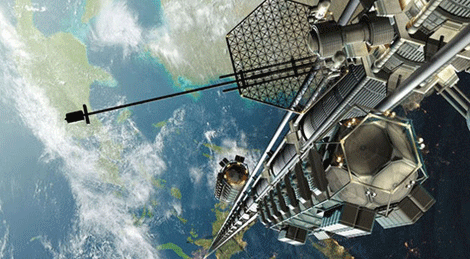
The space elevator has been much talked about, but now Japanese engineering giant is setting out to build one by 2050
By 2050 we should all be able to hop into a lift and journey up into space at a fraction of the cost of rockets, according to Japanese construction giant Obayashi.
The space elevator has often been touted in science fiction, but with the development of carbon nanotube technology and graphene in recent years, the challenges faced by its construction are now practical rather than theoretical, which is why Obayashi thinks it can succeed.
When built, its elevator it will reach 96,000 kilometres into space, using robotic cars powered by magnetic linear motors to ferry people and cargo to a newly-built space station, taking seven days to get there.
Having spoken to ABC Australia, Dr Yogi Ishikawa, research and development manager at Obayashi, states that the transport is set to become a reality due to the advances in carbon nanotechnology – a material that is almost a hundred times stronger than steel.
For all this development it is still estimated that it would be massively cheaper than current methods of sending a rocket into space – theoretically dropping the cost per kilogram sent into space from tens-of-thousands of pounds, to mere hundreds.
By connecting to a space stations craft could be launched outside of the earth’s gravitational pull, reducing the massive quantities of fuel needed to reach outer orbit in the initial stages.
Although its the stuff of science fiction, and the direct competitor of numerous space race programs, Obayashi is convinced that it will work, and is already working with Japanese universities on developing the passenger train technologies, including the much needed brakes for the way back down.
//www.youtube.com/embed/sYYdh84pFng
The development of graphene technology potentially allows for other less vertical projects, including the LA to San Francisco Hyperloop project.






